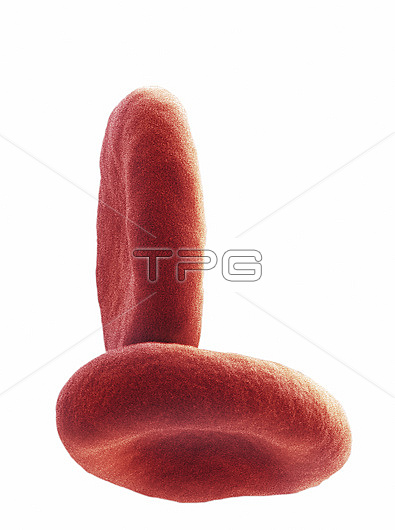
Coloured scanning electron micrograph (SEM) of two human red blood cells. Red blood cells (RBCs), or erythrocytes, take up oxygen in the lungs and distribute it around the body. The cytoplasm of erythrocytes is rich in hemoglobin, an iron-containing biomolecule that can bind oxygen and is responsible for the red colour of the cells. The cell membrane is composed of proteins and lipids and this structure provides properties essential for physiological cell function (deformability and stability) while traversing the circulatory system, especially the capillary network. RBCs are the most abundant type of cell in human blood, accounting for 40% of the blood volume. Each cubic millimetre of blood contains around five million of these tiny, flexible disc-shaped cells. Because the cells have no nucleus and are subjected to constant physical action, they last only four months before being destroyed and broken down. Magnification: x2600 when shortest axis printed at 25 millimetres.
| px | px | dpi | = | cm | x | cm | = | MB |
Details
Creative#:
TOP25525788
Source:
達志影像
Authorization Type:
RM
Release Information:
須由TPG 完整授權
Model Release:
N/A
Property Release:
N/A
Right to Privacy:
No
Same folder images:

 Loading
Loading